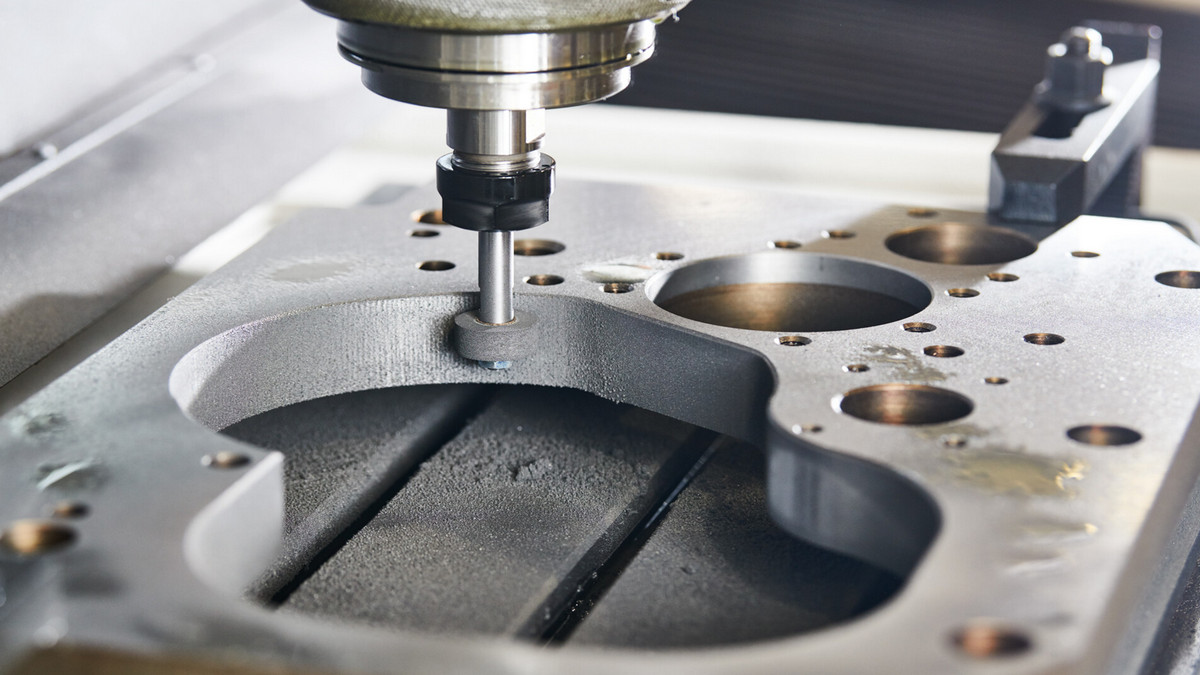Blanking is a punching piece used as a blank on the plate. Punching is punching round holes on the workpiece, and it can be performed simultaneously with blanking.
What is Punching?
The punching process refers to punching various graphics on steel, leather, cloth, wood, and other materials to meet different needs.
Compared with sheet punching, pipe punching has many similarities in terms of deformation properties and deformation characteristics, but because the pipe is a hollow cylindrical blank, the wall of the pipe is in contact with the convex and concave dies during punching is an isolated surface. It is not flat like a plate, so special technological measures and its mold structure need to be taken. The traditional method of punching is to use a punching die to process through holes on the flat plate. The pipe punching process can be divided into a steel die punching and rubber die punching.
What are the Methods of Punching?
-
Steel die punching process:
It is to use the convex and concave dies made of tool steel to punch the pipe. According to the relationship between the movement direction of the punch and the movement direction of the press slide when the die is working, the steel dies punching can be divided into vertical punching and horizontal punching. The so-called vertical punching means that the movement direction of the punch is consistent with the movement direction of the press slider. It is to place the punch on the upper die and move up and down with the slider of the press, while the female die is mounted on the cantilever support of the lower die. Since the die of this type of die is cantilevered, it can be called a cantilever punching die. The so-called horizontal punching means that the movement direction of the punch is perpendicular to the movement direction of the press slider. It fixes the punch and the punch on the lower die and uses the wedge fixed on the upper die to push the slider with the punch on the lower die. Make horizontal movement to achieve the purpose of punching the pipe wall. Because this type of die uses a wedge mechanism to drive the punch to move horizontally, it can be called a wedge punching die.
-
Rubber dies punching process:
It is to use the easy deformation and polymerizable of rubber to disperse and place it inside the pipe as an elastic punch instead of the steel punch, to carry out punching processing on the pipe wall. The rubber used as elastic punch includes natural rubber and polyurethane rubber. Since the unit pressure that the former can withstand is not high (generally less than 40Mpa), it is only used for small batch production of soft materials and thin-walled pipes. Polyurethane rubber is an elastomer between natural rubber and plastic. It not only has high strength, but also has a large allowable unit pressure (generally up to 500Mpa), and has a high hardness range, wear resistance, oil resistance, aging resistance, and tear resistance. So long life and can be used for larger batches. Punching on the tube can be divided into two methods: core and coreless. In the cored punching method. The punching process is completed by the cooperation of the upper and lower dies. Different from normal punching, the lower die needs to extend into the tube, and the lower die and the lower die holder cannot be made into a whole.
When designing the mold, the following factors should be considered:
- The phenomenon of the uneven wall thickness of the pipe. Since the special-shaped pipe is drawn by welding the round pipe, not only there is a weld on the inner side of the pipe wall, but the uneven pipe wall is a normal phenomenon.
- The problem of deformation at the punching point of the pipe after punching may cause the core and the pipe to stick together after the punching is completed, and the pipe unloading may be difficult.
- The burr of the blanking incision of the square tube is large, which affects the penetration of the lower die.
- Since the upper and lower molds cannot be fixed together, how to connect the upper and lower molds to ensure the convenience of loading and unloading is the key to this process.
-
Hydraulic punching process:
The parts formed by the hydroforming process have the advantages of saving materials, reducing costs, and good performance. With the massive use of hydroformed parts. Since the tubular hydroforming parts are hollow, traditional processing methods cannot be used for punching, and laser cutting methods are generally used for processing. Although good processing quality can be guaranteed, the equipment investment is expensive, which is not conducive to reducing costs. As a new type of punching method, hydraulic punching can punch hollow parts and parts with a curved axis, which has incomparable advantages over traditional processing technology. Hydraulic punching does not require a die during the entire punching process, which has great advantages for processing parts that cannot be placed inside a die due to too small internal dimensions or a curved axis. At the same time, the use of hydraulic punching instead of laser cutting plays an important role in reducing the production cost of parts and improving production efficiency. In hydroformed parts, most of the holes can be processed by the hydraulic punching process, except for the oversize or special position on the part.
What is a Dropout?
The required material is separated from the board base material by a press, which is generally called blanking. The material is separated from the base material by various methods (presses, shears, sawing machines, flame cutting, plasma cutting, laser cutting, etc.), which is a blanking process. Use a die to separate the sheet along the closed contour curve or straight line, the punched part is the finished product, and the rest is scrap. The sheet is generally placed on the die, and the punch is pressed down. Since the convex edge of the concave die and punch has a cutting edge, the shearing action occurs while pressing, and the blank of the required shape and size is cut from the sheet for the next step.
How do Design Blanking and Punching Die?
- Blanking: Layout, calculate the gap between the convex and concave die, calculate the discharge force, design the mold structure according to the blanking part structure, select the mold material, etc. Blanking is a stamping method of punching a piece of blank as a blank on a plate and using blanking to obtain a part or blank of a certain shape.
- Punching: Similar to blanking, punching is based on punch, and blanking is based on the concave die. Punching is to punch round holes on the workpiece, and it can also be performed simultaneously with blanking, such as blanking and punching compound die. The material in the blank is separated from the blank with a closed contour to obtain a punching method for a perforated part.
Differences between punching and blanking die processing:
The blank deformation and separation process and die structure of the two processes of punching and blanking are the same. The difference is that the purpose of punching is to obtain parts with holes, and the purpose of blanking is to obtain blanking parts with a certain shape and size. Blanking processing is for blanking of workpieces that need to be further processed, or directly punching out workpieces. Punching is because the pipe is a hollow cylindrical blank, and the wall of the pipe that is in contact with the convex and concave dies during punching is a solitary surface instead of a plane like a plate, so special technological measures and mold structure must be taken. The punching is based on the punch, and the blanking is based on the punching.
Processing features:
- Plate stamping production mainly relies on die and stamping equipment to complete the processing. The process is easy to realize mechanization and automation, with high productivity and easy operation, so the cost of parts is low. Parts with complex shapes can be punched out, generally without cutting processing, and with less waste, thus saving raw materials and energy consumption.
- The commonly used raw materials for sheet stamping are low carbon steel, alloy steel with high plasticity, and non-ferrous metals. Which are sheets, strips, or strips with good surface quality, lightweight, low material consumption, high strength, and good rigidity.
- The dimensional tolerance of stamping parts is mainly guaranteed by the die, so the product has high enough precision and small surface roughness value, stable size, and good interchangeability. However, the manufacturing of the die is complicated and the cost is high, and its superiority is outstanding only under the conditions of mass production.







.png)






